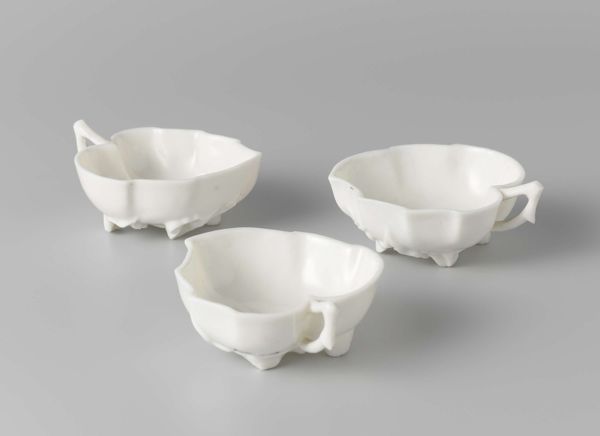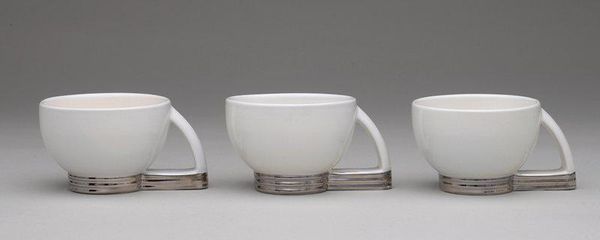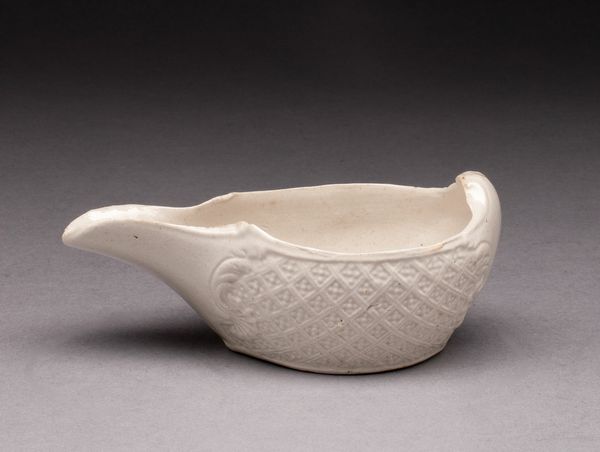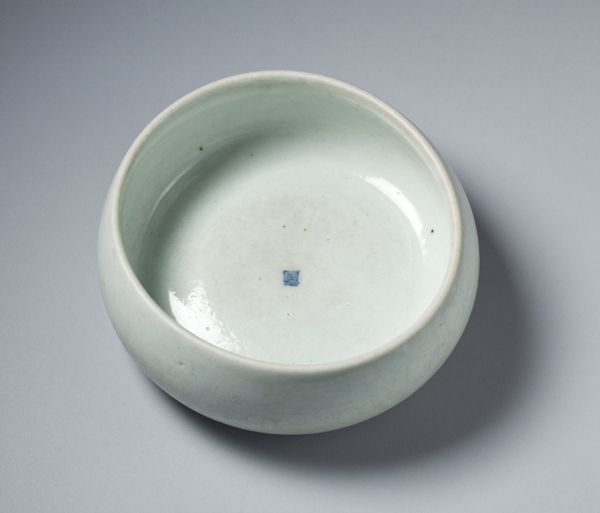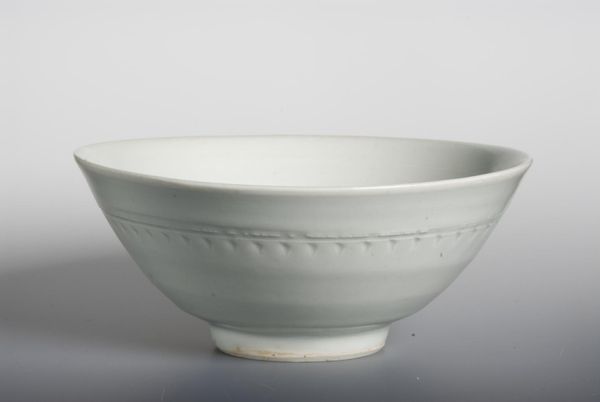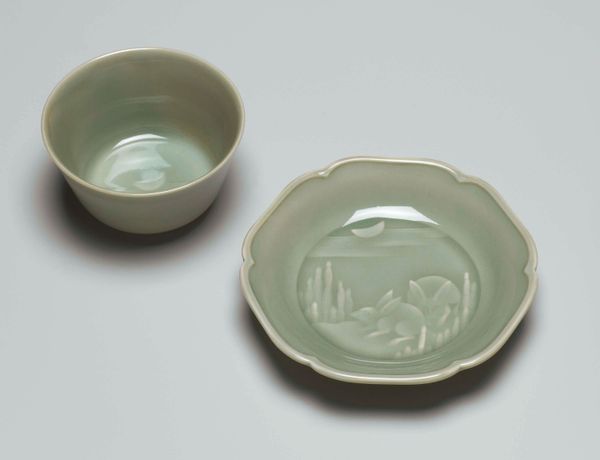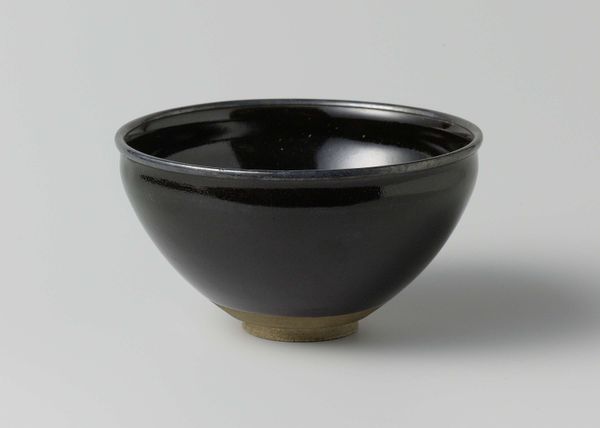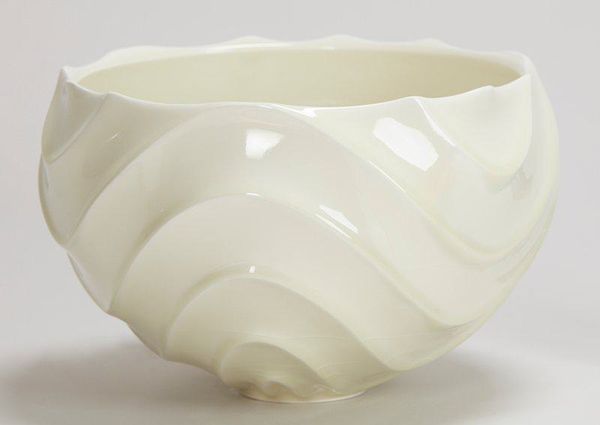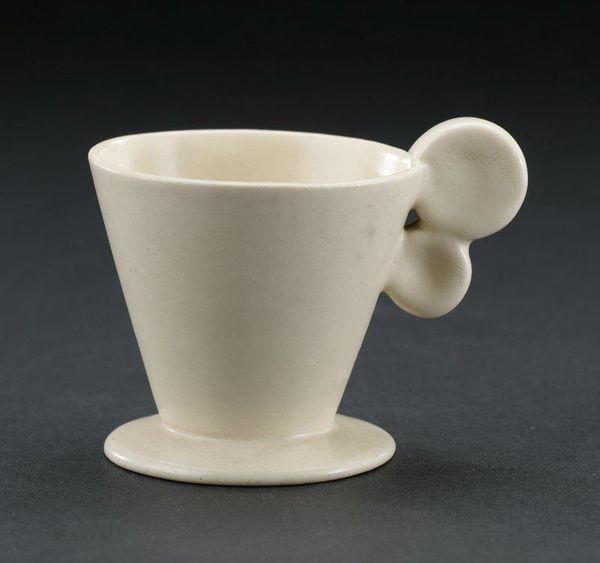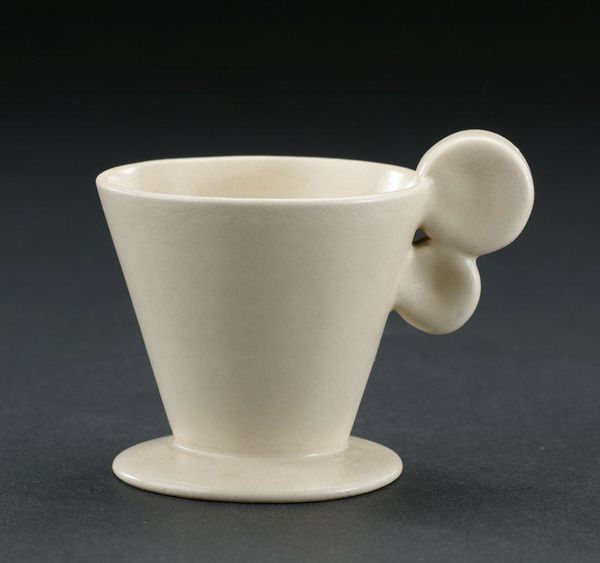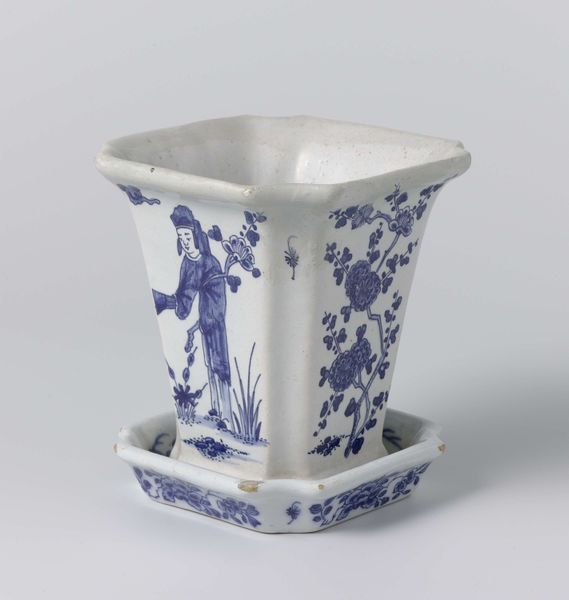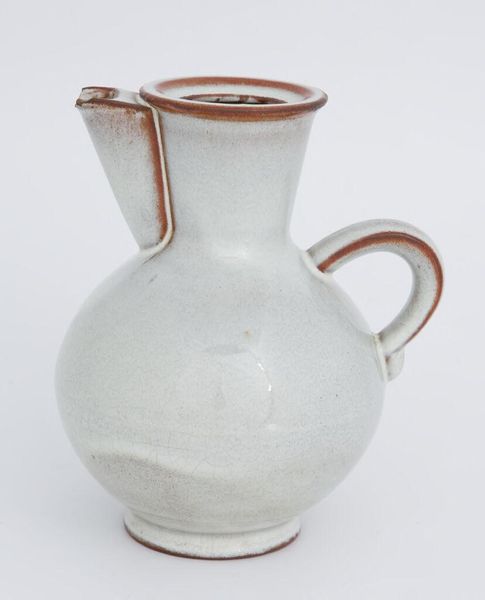
ceramic
#
ceramic
#
stoneware
#
ceramic
#
modernism
Dimensions: 13 x 7 1/4 in. (33.02 x 18.42 cm)
Copyright: No Known Copyright
Editor: This striking stoneware piece, a "Vase-bowl" by Wilhelm Kåge, was created around 1940. It's got a certain starkness, doesn't it? What’s most compelling is the juxtaposition of these simple geometric forms; the bowl seems almost an afterthought. What strikes you about it? Curator: For me, it's about the relationship between industrial processes and handcrafted traditions. Kåge was deeply engaged with the social implications of design. Is this piece mass-produced, or is it unique? That distinction affects how we understand its purpose, doesn't it? Editor: I see what you mean. It looks quite uniform, almost as if it could be replicated easily, but I'd assume this to be a unique, hand-crafted product given the time period. Do you think Kåge was deliberately playing with this tension? Curator: Absolutely. Kåge was fascinated by the intersection of art, industry, and the everyday. Stoneware, as a material, lends itself to both utilitarian objects and high art. He elevates this through the stark geometry. He uses familiar objects such as a bowl and vase, which democratizes it while also subverting expectations with it's simplified abstraction. Who would buy this in 1940 and why? What does this artwork tell us about labor and manufacturing during this period? Editor: It makes me think about functional design and the role of craft in a modern world. I hadn't considered the socioeconomic aspect so closely before. Curator: Exactly! Seeing art this way highlights how deeply embedded material production is within social structures and our daily life, transforming our perceptions. Editor: It’s interesting to view a beautiful object not just for its aesthetic qualities, but through its production and consumption too. Curator: It makes art so much richer, right?
Comments
minneapolisinstituteofart about 2 years ago
⋮
Wilhelm Kåge began his career as a painter, receiving his initial training at the Valand Art School in Gothenburg and later studying under Johan Rohde in Copenhagen. As Gustavsberg's earliest modern designer (and artistic director from 1917-49) he produced a number of witty and elegant designs arising from his familiarity with the modern movements in painting and sculpture. In this work he has made a sly reference to Cubism, slicing the vase form in half and combining a vase and bowl into one unit as it might appear in a Picasso still life. The Surrea series included a wide range of cut and reassembled vases and bowls, some partly colored, some left undecorated. Kåge's lively imagination brought forth an astonishing variety of forms. The angularity of several geometric vessels in the Surrea series contrasts strikingly with the "soft forms" of organically shaped tableware produced during the same period. A porcelain vase with silver inlany from another one of his lines, the Argenta series, is also on display in this exhibition.
Join the conversation
Join millions of artists and users on Artera today and experience the ultimate creative platform.
